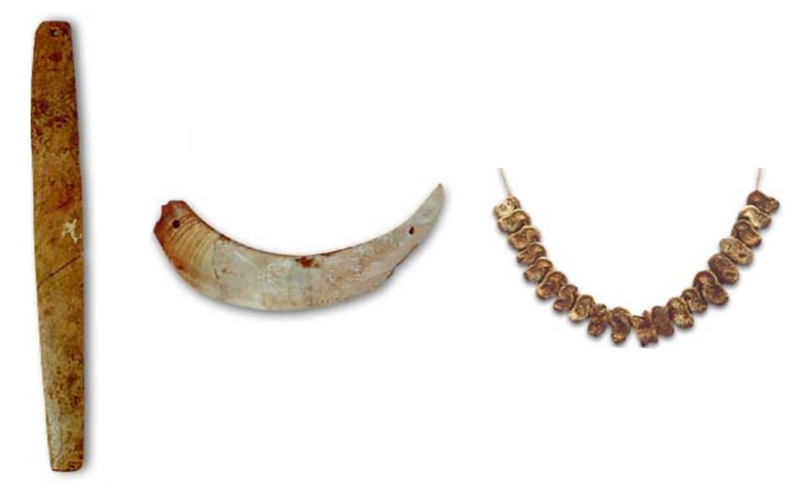- Home
- Hârsova, the chalcolithic village
- Imagination and creativity
- Ornaments
Long flat pendant made of bone.
Arch-shape pendant made from boar tusk, perhaps worn by a hunter.
Necklace of twenty sheep astragals. The elements of the necklace were carefully chosen and arranged for symmetry with the central astragal being unique. Two of the elements bear engraving, and particular parts had been painted red.
According to archaeological documents, the members of the Gumelnita community adorned themselves in a richer and an undoubtedly more varied way than we see from archaeological evidence.
The perishable materials which might have been used, like cloth, feather, wood or leather, would not survive the millennia, giving us limited evidence of daily or ceremonial dress, neither do we have any idea concerning the existence of body paint or tattoo.
In spite of this, the variety and number of ornamental objects in terra cotta, bone, horn, shell and the like, and to a lesser extent in metal, reveals, at least partially, the fashion and ostentation practiced by prehistoric men and women.
Modeled from clay, or carved from bone or polished shell, the jewelry was most commonly in the form of a pendant. It is possible that some pendants indicated social status by means of their symbolic character.
In the end, the objects, which for us today are considered ornamental, were not exclusively aesthetic objects for the people of that long ago era. The ornaments were most probably a demonstration of beliefs and ideas specific to their culture, whose true contents are lost in time.
